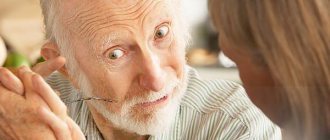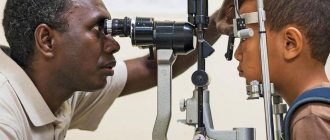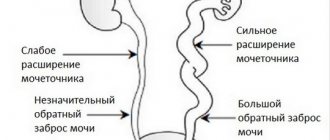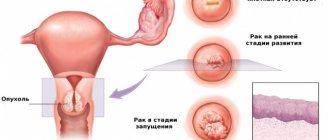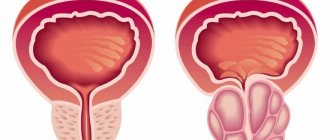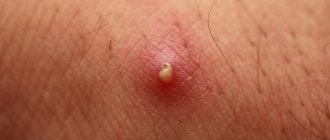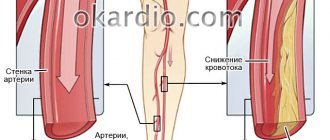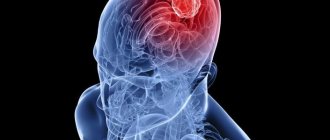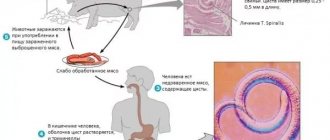- What it is?
- Causes
- Clinical picture
- Stages
- Diagnostics
- Treatment
- Folk remedies
- Complications
Recently, doctors are increasingly forced to diagnose “anorexia nervosa.” From the age of 13-14, teenage girls start dieting, deliberately exhausting themselves with hunger and exercise. All this leads not only to painful thinness, but also to disruption of almost all functions of internal organs. If left untreated, the disease can be fatal. As a preventive measure, parents should promptly explain to their children what it is and why it is dangerous. And for this they themselves need to know what this pathology is.
What it is?
Unlike symptomatic and drug-induced, anorexia nervosa is a mental disorder of eating, when a person deliberately refuses to eat for the purpose of losing weight or maintaining a reduced weight.
Some doctors believe that this disease is a type of self-harm. Patients have an unhealthy desire to achieve the minimum value on the scale and a pathological fear of obesity. At the same time, they have a distorted perception of their body, considering it imperfect, even if there are no special problems with their figure.
At this point in time, anorexia nervosa syndrome is being carefully studied by scientists from different countries, since in some cases its causes and mechanism of occurrence remain unclear. All kinds of research are being conducted, their main goal is to develop a single therapeutic complex that would provide a 100% guarantee of recovery. The treatment methods that are currently available are not always effective.
Origin of name. The term “anorexia” goes back to two ancient Greek words: “ἀν” - a particle of negation, as in Russian - “not”, and “ὄρεξις”, which translates as “appetite”.
Causes
The reasons are conventionally divided into several large groups: biological (genetics), psychological (internal complexes, family relationships), social (influence of society: imposed stereotypes, imitation, diets).
Genetics
Studies were conducted in which not only patients with anorexia nervosa took part, but also their relatives (at least 2 people). It was found that the obsessive desire to lose weight and conscious refusal to eat is determined at the chromosomal level.
Scientific research was aimed primarily at studying the DNA responsible for eating behavior. In particular, a susceptibility gene to this disease was identified - the brain-derived neurotrophic factor gene. This is a protein involved in regulating appetite at the level of the hypothalamus and in controlling the level of serotonin, which, when low, can cause a person to become depressed.
It was concluded that genetic vulnerability lies in the inheritance of a certain personality type, mental disorder or dysfunction of neurotransmitter systems. They may not manifest themselves in any way throughout a person’s life, but they may receive an impetus for development under unfavorable conditions, which in this situation are diet or emotional stress.
Biological factors
- Zinc deficiency.
- Dysfunction of neurotransmitters that regulate eating behavior - serotonin, dopamine, norepinephrine.
- Excess body weight.
- Early onset of menstruation.
Family factors
- Having relatives suffering from anorexia, bulimia or obesity.
- Having family members suffering from depression, alcoholism, or drug addiction.
- Unfavorable atmosphere in the family.
- Lack of parental love.
- Parents' divorce.
Personal factors
- Inconsistency with the requirements and expectations of society.
- Low self-esteem.
- Perfectionist-obsessive personality type.
- Constant self-doubt.
- Feeling of own inferiority.
Age factor
Some scientists believe age is one of the main causes of anorexia nervosa. Adolescence and young adulthood are at risk. In the last 10 years, there has been a trend of lowering the age limit. If earlier girls aged 14-16 years old became hostages of thinness, today they begin to exhaust themselves with diets and become exhausted from the age of 12-13.
Anthropological factors
It is believed that anorexia nervosa is most directly related to search activity and determining one’s place in life. The main incentive to refuse food is the fight against obstacles in the form of your own appetite and everyone who wants to force you to eat. In this case, the process turns out to be more important than the final result. Anorexia is an everyday coping experience where every uneaten bite is perceived as a victory. Moreover, the more difficult it is to achieve, the more valuable it is for the patient.
Other factors
- Emphasis on thinness as the ideal of female beauty.
- Desire to become a model.
- Living in a major city in an industrialized country.
- Promotion of a slim body in the media.
- Stressful events: death of a loved one, any physical (including sexual) violence.
- Requirements of the profession (this applies to models, singers, TV presenters, actresses).
Based on the name, it most often develops on a nervous basis, under the influence of stressful situations and emotional tension.
Statistics. It is common knowledge that anorexia nervosa primarily affects teenage girls and young women. On average, about 5% of the fair sex and about 0.5% of men suffered from it.
Anorexia is a terrible phenomenon of our time. What is hidden behind it?
The problem of anorexia has been known for a long time, but with the development of the Internet it is gaining new dimensions. Millions of girls unite in communities where they brag about being thin, motivate each other to go hungry and strive for the ideal of 35-40 kg. Many of them are well aware of the terrible consequences of this debilitating disease, but they themselves do nothing to treat it. In essence, this is a public and slow suicide. A terrible phenomenon of our time. What is hidden behind it?
21 years old.
25 kilograms Having met 2017, fourteen-year-old Lida resident Masha Ivanova decided to start a new life, where there would be a place for healthy eating and sports. The goal is good. Why not try it? Even if you are 165 cm tall and weigh only 53 kilograms. For the first six months, the girl got the hang of it, but in the summer it all started. Every day she pumped her abs until exhaustion. Over the months of training, her stomach had become not only flat, but sunken so much that only her ribs were sticking out. But Masha liked it. Just as I liked looking in the mirror at my legs that had turned into matches. And she continued not only to increase physical activity, but also to reduce food portions.
— By September, when school started again, I ate 100 g of cottage cheese a day,
— the ninth-grader admits.
— The rest of the time I ate my hunger with chewing gum.
Three packs were consumed per day. I know that many girls drink water instead of food. But a glass of water is an extra 200 grams! I was afraid of these grams. I constantly jumped on the scale - after every meal, after brushing my teeth. And I was happy if the numbers went down. Masha could not stop. Being an excellent student at school, she was used to completing any task to the end. In just six months she lost almost 10 kg. She was saved by her mother, who, seeing that something was wrong with her daughter, went with Masha to Minsk to the Republican Scientific and Practical Center for Mental Health. The girl did not want to go to the doctors until the very end. She was sure that she was healthy. And she agreed only to calm her mother down.
“I didn’t doubt one iota that the doctor would look and say: “Yes, she’s a good girl, she’s not sick with anything.” Go home,” recalls Masha. “But they didn’t let me go anywhere.” I was beside myself. I didn’t believe that my mother could leave me in a mental hospital, because she loves me so much! I hated her for it. But now I understand that it was necessary, that I really had problems. Do you know when it became scary? When I met a new patient in the corridor of the department, a 21-year-old girl weighed 25 kilograms. She was sent to intensive care. Bones covered with skin. She saw it and cried bitterly. On the one hand, I was far from this, but on the other, I was so close...
In total, in the 10th department of the Republican Scientific and Practical Center for Mental Health, where Masha Ivanova is currently being treated, there are ten beds intended for patients with eating disorders. And, as the head of this department, Svetlana Melguy, says, they are never empty:
— People began to seek help more often and at earlier stages of the disease. Most of our patients are between 16 and 24 years old. Although there are those who are younger or older. The cut-off age for diagnosis of anorexia nervosa or bulimia nervosa is considered to be 28 years. However, you can suffer from this disorder from the age of twenty, and seek help only after thirty. Guys also get sick, but 15-20 times less often than girls.
— Svetlana Leonidovna, what are the prerequisites for the development of this disease?
— There are three groups of reasons. By biological we mean hereditary burden - the likelihood of anorexia increases in those families where someone suffered from affective disorders or some kind of addiction. Social means beauty standards imposed by society, advertising of a healthy lifestyle, and the connection between thinness and success. Unfortunately, success and achievements, and not warmth, comfort, love, become the motto in many modern families. Psychological factors include personality traits: the notorious perfectionism, excellent student syndrome, the desire for success without relying on one’s own abilities, capabilities and limitations. But these are all prerequisites. But the stress factors that trigger the disease include adolescence and the breakdown of significant relationships: parental divorce, unsuccessful love, sometimes the death of an animal to which an attachment was formed.
— Why is anorexia dangerous?
— The disease affects both the psyche and the body.
There is isolation, a solitary lifestyle, depressive and obsessive-compulsive disorders. One or another type of addiction may occur, including alcohol. As for the physical condition, there is not a single organ that is not affected in the process of exhaustion: the heart, blood vessels, gastrointestinal tract, reproductive system. Between 5 and 20 percent of patients die from this disease. Roughly speaking, every fifth. — What should parents pay attention to so as not to miss the first alarm bells?
— In principle, you should pay attention to children and see them not as extensions of yourself, your dreams and desires, but as real people with their characteristics, hobbies, and opinions. If everything is in order with this, there is no reason to develop symptoms of the disease. And if we talk specifically about clinical signs, then these are conversations about healthy eating at an early age (12-13 years), passion for excessive physical activity, and fasting. Children at this time become irritable and withdrawn. Previous hobbies fade into the background. And the first thing that comes to mind is how to eat less.
The last flap of a butterfly's wing
I couldn’t fit into my favorite jeans, my boyfriend called me fat, I was inspired by a movie with a skinny actress—there are plenty of reasons to take care of yourself. But if it is enough for some to give up sweets and starchy foods, others begin to look for tough measures. Where to look? Naturally, on the Internet. While real friends insist that your figure is fine and don’t want to share your worries, there will certainly be like-minded people in the virtual world. You enter a harmless community for losing weight and, unnoticed by yourself, moving from one link to another, you find yourself in a group like “Typical anorexic”, “Anorexia is life”, “Shut your mouth - die compact”, “Show your bones”. By searching for “anorexia” on the popular social network VKontakte you can find more than 3,000 groups! And this is just the tip of the iceberg.
When meeting someone, they indicate not their name or occupation, but their body parameters. 173 cm and 55 kg - I’m writing on the wall of one of these communities. Under the post I get: “Girls over 50 kg are fat. Take care of yourself,” “Try fasting. It’s hard, but the dream is worth it.” I wonder what my therapist would say to this, advising me to gain a kilogram or two. But here the standards are different and they are far from even the promoted 90-60-90. They immediately call me a “fat maggot.” With harsh phrases they push each other to “deeds”. “You have to dream of becoming a butterfly.” Beautiful image. But what's behind it?
Ana groups (from the word “anorexia”) are akin to religious sects. It has its own rules for joining the ranks, slogans (for example, “To be thin, you have to suffer,” “Do you want to eat? Drink some water! That’s the motto of an anorexic!”) and even its own slang. Anorexia is called “Ana,” bulimia is called “Mia,” weight loss is called “plumb,” weight gain is called “gain,” and so on. One of the communities even posted a manual “How to think to become anorexic”: “From the very beginning, spoil your relationship with food in every possible way. You need to feel as much disgust as possible for food, nutrition, the kitchen, the refrigerator, restaurants...” The creators of the public advise posting photos of fat girls and women around the house that will cause disgust. And for motivation - pictures of thin models.
All the content of ana-groups pushes girls towards an obsession with their weight, counting calories and striving for an invented ideal, although many of them claim that they do not promote an unhealthy lifestyle. Community walls are updated several times a day with new photos of subscribers before and after losing weight, photos of super-slim celebrities, and text posts like “Be patient for the sake of your dreams. It’s hard, but it’s worth it,” “Boys love skinny people, that’s why you’re alone,” “Exchanging your dream for food is stupid.” A huge number of diets are laid out for everyone to see, ways to hide your starvation from your parents, a list of pills that allow you to achieve your desired goal. The medicine cabinet contains antidepressants that suppress hunger, laxatives, diuretics, and even cough syrup containing appetite suppressants.
To make it easier to follow the goal, many people look for partners: “I lost 20 kg! For further movement we need support”, “Who is with me for fasting? I’m looking for a reliable friend who won’t melt away in the first days.” Another option to get support is to create a personal diary of significant “achievements.”
Even the death of subscribers and administrators of ana-groups does not force those obsessed with kilograms to escape from this nightmare. Moreover, this only fuels interest in the public. In 2011, the administrator of the “40 kg” community, Margarita Aslanyan, died. She lost weight from 66 to 39 kilograms: she fainted from hunger and suffocated because her tongue stuck in her throat and blocked her breathing. A month after Margarita’s death, her mother wrote a letter: “We have received a forensic expert’s report. Almost all of my daughter’s organs at the age of 20 were in the condition of a 70-80-year-old person, only the lungs were not affected.” The letter was written to warn the other members of the group about the danger of the disease. But it didn't help. If at the time of Margarita’s death there were 18 thousand subscribers in the “40 kg” group, now there are more than 5 million! This is the most popular and commercially successful weight loss group on VKontakte. What does commerce have to do with it? Administrators charge money for links on the public wall to the diaries of girls who dream of personal subscribers and admirers. In particular, for one post in “40 kg” they ask from 70 to 120 dollars.
Exhausted nature wants to meet
Appetite-suppressing pills, coffee instead of food, constant brushing of teeth, chewing without swallowing - all these techniques are used to suppress the feeling of hunger, which is considered enemy No. 1. It is natural for a person to feel hunger. Evolution has laid down this mechanism for the timely replenishment of energy reserves in the body. But this intelligent mechanism can also be trained. The main thing is to convince yourself that food is evil.
— Psychological attitude is a strong thing,
—
psychotherapist Alexey Khadorkin is confident. — All psychotherapeutic techniques are based on this.
A person can independently program himself so that the very thought of cigarettes, alcohol or some other product causes disgust. It is necessary to directly associate the extra pounds with the food that causes them. For example, flour, sweet. Constantly convince yourself during auto-training and relaxation that this is what prevents you from living a happy and beautiful life. This will cause certain reactions in the body. The person will feel slightly nauseous when imagining eating this food. The important thing here is not to overdo it and set boundaries right away.
— There is such a stable concept that per year you can lose weight by no more than 10-15 percent of your weight at the beginning of losing weight.
Losing more kilograms can lead to serious irreversible changes and complications - both physiological and psychological. There are very passionate people who elevate any task they undertake into a fixed idea, an obsession. They get it into their heads so much that what they think are extra pounds disfigures their appearance, interferes with their career, and prevents them from achieving success with the opposite sex. Doctor of Medical Sciences Eleonora Kapitonova
explains:
“If the body does not receive what it needs to renew expended resources and energy, it finds workarounds and begins to eat itself, that is, to use its own tissues to maintain vital functions. For example, it uses muscle tissue and other protein structures to produce amino acids. It synthesizes glucose from them, because energy is needed. But fat is consumed last, because fat is the body’s strategic reserve, it is our “bank deposit”, which will be used only in an emergency.
It is amazing that young people, who have enormous access to information, are ruining their health by following the incompetent advice of Internet “experts.” Without understanding what is happening in the body, they give recommendations that not only do not bring any benefit, but are also harmful to health, Eleonora Kapitonova is sure:
“In any business, it’s better to do everything right right away than to redo it later.” Any “remake” will be worse than what was originally intended. Same with weight loss. Using starvation or unbalanced diets, you can very quickly get stunning results, but, unfortunately, not for long, and even cause health problems in addition.
Survival Challenge
Today you can get out of the abyss of anorexia.
But to do this, you need to seek help in time - preferably in the first three years of the disease - and use complex therapy, since the disease causes multiple complications. “Patients with an eating disorder are treated with the participation of various specialists: psychiatrist, psychotherapist, psychologist, therapist, neurologist, endocrinologist, gynecologist, ophthalmologist,”
says
Svetlana Melguy. - First, a thorough diagnosis is carried out.
Then symptomatic drug treatment is applied and nutritional rehabilitation is carried out. Patients do not have a special diet - food is not the basis of this disease. Patients adhere to a standard hospital diet. But some are prescribed a mixture for enteral nutrition to facilitate absorption and digestion of food, because at certain stages of anorexia this process is disrupted.
- Plus, psychotherapy is carried out and, if necessary, drug correction of mental state disorders - antidepressants, atypical antipsychotics, tranquilizers are prescribed, -
Svetlana Leonidovna continues.
— On average, patients stay in hospital for 2-2.5 months.
This is the optimal period during which you can achieve successful nutritional rehabilitation and change your attitude towards weight, body, understanding of painful symptoms and what lies behind them. Next comes rehabilitation outside the clinic. Masha Ivanova spent more than two months receiving treatment at the Republican Scientific and Practical Center for Mental Health. This means you can prepare for an early discharge. On the scales - 50 kg. There is peace in my soul:
— Frankly speaking, once every two weeks the thought arises that it was better before, I might not have recovered so much. But most of the time I'm happy with myself. Thoughts about food, calories, and appearance arise extremely rarely. I want to leave the center and be sure that the weight loss nightmare is over forever. I understand that there is a chance to fail. But I hope this doesn't happen. I want to live. Understand that life is a wonderful thing and you shouldn’t waste it counting calories.
OPINION
Oksana Nekhaichik, deputy of the House of Representatives:
- Today, children spend a lot of time on the Internet. Parents are required to take measures to protect their children from dangerous information. You can set up parental controls to protect your son or daughter from unwanted television or web content. Another option is to set a password on your computer. It is necessary to break the prevailing stereotype: “If the child is at home and sitting on the computer, then everything is fine. He’s not hanging around on the street, not in a gateway with some dubious company.” This deepest misconception leads to the fact that children completely go online. And then parents have to turn to psychologists and psychotherapists. We just need to do more with our children, get out of our apartments, go to parks, playgrounds, and watch movies together in cinemas. And then it won’t happen that after a guy calls a girl too fat, she joins thematic communities in an attempt to lose weight and drives herself to exhaustion. The parent, and not the Internet, should be the island where the child can speak out, get advice, where he will be consoled and supported.
The state also needs to take effective measures to prevent such destructive information—about methods of fasting, quick cures for a particular disease—from appearing. We prohibit the distribution of extremist and pornographic materials, and there should be stricter control over medical advertising. This issue is being studied today. It is necessary to carefully check whether those who provide such advertising have any medical licenses. Unfortunately, our people believe everything they write on the Internet. Look what happened. Women recommend giving birth at home, mothers advise each other not to vaccinate their children (that’s where measles comes from), if a child catches a cold or develops a rash, they run not to the doctor, but to the Internet for advice from pseudo-experts. It is not right. And this needs to change.
Beauty makes you nervous
Twiggy (Leslie Hornby).
It is this British supermodel who is believed to have become the progenitor of the cult of anorexia. Although at the peak of her popularity in the 1960s, the desire for androgynous thinness was called “Twiggy syndrome.” With a height of 169 cm, the model weighed 40 kg and had parameters of 80-50-80.
Demmy Moor.
The American actress has always been a little obsessed with her beauty and has tried quite a few diets. In 2012, an obsession with appearance and depression caused by a breakup with Ashton Kutcher drove the 49-year-old star to the point where she had to go to hospital and was diagnosed with anorexia.
Mary-Kate Olsen.
Both Olsen sisters have always been able to boast of their slimness. For Mary-Kate, this slimness turned into disaster - at the age of 18, the emaciated girl was sent to a specialized clinic, where doctors had to fight for her life. The cause of the illness was nervous overload at work, stress and the first separation from my sister.
Victoria Beckham.
The star does not deny that she is on strict diets. It all started many years ago, when one of the producers, still unknown to Victoria, said: “If you remove your fat folds, you will do us a big favor.” The words spoken in the presence of other girls caused such severe psychological trauma to the singer that ordinary food began to disgust her, and her body could only accept raw vegetables and fruits.
Clinical picture
Typical symptoms of anorexia nervosa:
- body weight is 15% lower than expected, BMI is less than 17.5;
- delayed physical development during puberty: growth stops; Breasts do not enlarge, there is no menstruation in girls; the development of the genital organs in boys slows down;
- distortion of the perception of one’s own body, fear of obesity as an obsession;
- weight loss is provoked by the person himself in the following ways: refusing to eat, artificially inducing vomiting after each meal, using laxatives, diuretics or pills to reduce appetite, excessive exercise;
- an endocrine disorder, the symptoms of which are amenorrhea in women, decreased libido in men (in later stages of the disease), increased levels of cortisol, growth hormone, problems with the production of thyroid hormone and insulin secretion.
There are also other signs that belong to the field of psychology:
- depression;
- looking at yourself in the mirror for a long time;
- daily weigh-ins;
- sleep disorders;
- incorrect eating behavior: eating while standing, crushing foods into small pieces, eating them only cold or not thermally processed;
- incorrect attitudes: “With a height of 180 cm and a weight of 50 kg, I want to weigh 30 kg”;
- low self-esteem;
- denial of the problem;
- absence from common meals;
- panic fear of gaining weight;
- constant feeling of completeness;
- termination of communication;
- irritability, unreasonable anger at everyone around; an unjustified feeling of resentment;
- sudden mood changes;
- passion for topics that are somehow related to food and weight: diets, the world of modeling fashion.
Physical disorders caused by anorexia are also diagnosed:
- algodismenorrhea;
- muscle spasms;
- constant weakness;
- disruption of the menstrual cycle;
- cardiac arrhythmia.
Relatives and friends should notice the first symptoms. Since the patient himself most often refuses to see them, it is often necessary to resort to compulsory treatment.
With the world - one by one. In Israel, since 2012, there has been a law prohibiting girls with unhealthy thinness from participating in advertising campaigns.
The first signs of anorexia
Please note that it is important to identify anorexia at the pre-anorexic stage.
In the absence of timely treatment, the disease will progress. Symptoms in this case worsen and can lead to the death of the patient. The cells of the body do not receive the protein they need, as a result of which they cease to function normally. This leads to irreversible changes in organs. Signs of anorexia at an early stage:
- low pressure;
- brittle nails;
- thin subcutaneous fat layer;
- decreased sex drive;
- irritability;
- depression;
- pale skin;
- dryness and hair loss;
- atrophied or flabby muscles;
- pigment spots on the skin;
- strange attitude towards food;
- dehydration;
- problems with menstruation;
- loosening of teeth;
- unstable mood;
- digestive problems;
- sunken eyes;
- irregular pulse.
Stages
Prognosis for anorexia nervosa often depends on the stage at which treatment was started. If at the initial stage, a quick and complete recovery is possible without relapses or side effects. When diagnosing cachexia, unfortunately, doctors are often powerless.
Dysmorphomanic (initial) stage
- Looking at your reflection in the mirror for a long time (more than half an hour) (often naked), while locking yourself in the bathroom or your own room.
- Obsessive thoughts about imaginary completeness, one’s own defectiveness and inferiority.
- First food restrictions.
- Depressed mood.
- Search for a diet.
- Feeling of constant anxiety.
Anorectic
- Prolonged fasting.
- Loss of appetite.
- Inability to adequately assess the degree of weight loss.
- Cessation of the menstrual cycle, decreased libido.
- Weight reduction of 20% or more.
- Convincing yourself and others that you have no appetite.
- Tightening the diet.
- A decrease in the volume of fluid circulating in the body - the first health problems begin: hypotension and bradycardia, chilliness, dry skin, baldness, adrenal insufficiency.
- Excessive physical activity.
- Euphoria from achieving first results, inspiration.
Cachectic (advanced) stage
- Protein-free edema.
- Violation of water and electrolyte balance.
- Irreversible degeneration of internal organs.
- A sharp decrease in potassium levels.
- Weight reduction by 50% or more.
- Inhibition of the functions of systems and organs.
- Death.
In the absence of treatment, the patient goes through all these stages, the last one ending in death due to failure of vital organs or suicide. Suicide is also possible at the anorectic stage, but less common.
On a note. Since 2005, November 16 is considered International Anorexia Day.
Diagnostics
Various instrumental and laboratory medical tests are prescribed for diagnosis:
- blood test (general and ESR);
- stool and urine tests to detect diuretic and laxative abuse;
- gastroscopy;
- examination of stool for fat content, occult blood, helminths;
- CT or MRI of the head;
- sigmoidoscopy;
- X-ray;
- X-ray contrast examination of the gastrointestinal tract;
- esophagomanometry;
- ECG.
To make an accurate diagnosis, the Eating Attitudes Test is also used.
Through the pages of history. The earliest medical reference to anorexia comes from Dr Richard Morton (17th century), who described his 18-year-old patient as "a skeleton covered in skin".
Treatment
Outpatient treatment of anorexia nervosa is carried out when the first two stages are diagnosed. With cachexia, the patient most likely needs to be hospitalized. Therapy until complete restoration of health can take from several months to 2-3 years.
Behavioral psychotherapy
Cognitive restructuring: patients themselves identify negative thoughts, make lists of evidence in their favor and against them, draw a reasonable conclusion, and learn to manage their own behavior.
Monitoring: detailed daily records made by the patient himself: what he ate during the day, in what quantity, in what form, menu, time of eating, sensations caused by food, etc.
Training on how to correctly solve emerging problems: patients themselves must find a problem in their own behavior (unreasonable weight loss), develop several ways to solve it, make predictions about how each of them will end, and choose the best option, and then follow it with a clear plan of action .
Refusal of incorrect internal attitudes such as “I’m ugly”, “I’m fat”. Increasing the patient's self-esteem. Creation of new cognitive formations of the type: “my usefulness and significance are not determined by my figure.” Formation of an adequate assessment of one’s own appearance.
Family psychotherapy
- Prescribed for the treatment of anorexia nervosa in adolescents.
- Identifies problems existing in the family.
- Works with all family members.
- Corrects the relationship between them.
Dietetics
The nutritionist individually develops a nutrition plan for the next month separately for each patient. It is distinguished by steps and consistency: a daily increase in calorie content by 50 kcal and portion size by 30-50 g until the desired indicators are achieved (at least 1,500 kcal per day and 300 g - the weight of one serving).
At first, the emphasis is on fruits and vegetables, then protein foods (chicken, seafood, fish), some carbohydrates, and natural sweets (dried fruits, honey) are introduced into the diet.
The patient develops new eating habits: eating strictly according to the clock, introduction to fractional meals, an explanation of what the balance of food and drink is, refusal of harmful foods.
Medications
- Drugs that normalize metabolic processes in the body (water-salt, carbohydrate, electrolyte, protein): Polyamine, Berpamin.
- Antidepressants: Eglonil, Ludiomil, Paxil, Fevarin, Zoloft, Cipralex, Coaxin.
- To increase appetite: Frenolone, Elenium, Pernexin, Peritol, insulin, anabolic steroids (Primobolan).
- Vitamins: B9, B12, C, zinc, magnesium, iron, potassium.
Medications can only be taken as prescribed by a doctor. Self-administration of any medications can lead to irreversible consequences and worsen the patient’s condition.
Folk remedies
Since it is very difficult to persuade a patient to seek medical help, family and friends may try to do something on their own. It is advisable to first consult with a doctor about the current situation and then follow his recommendations.
Working with an anorectic
- Identification and awareness of the problem by the patient himself.
- Calculating BMI and comparing it with normal values.
- Watching relevant films, reading books on this topic.
- Creating a favorable atmosphere in the family and environment.
- Support from family and friends.
- Resuming regular eating.
- The need for a medical examination and following medical recommendations.
Normalization of nutrition
Gradual inclusion of main dishes in the diet:
- First week: broths, soups, porridges with water, purees.
- Second week: bananas, berries, carrot and apple puree.
- Third week: boiled or steamed lean fish, adding meat to soup, milk porridge, freshly squeezed juices diluted with water, excluding citrus fruits.
- Fourth week: bread, vegetable salads, boiled or steamed meat, some spices.
General strengthening agents
- Soothing decoctions and infusions of herbs: mint, valerian, lemon balm, dandelion, nettle.
- Herbs to increase appetite: St. John's wort, mint, calamus, centaury, wormwood.
- Products to increase appetite: apples, dill, white bread, nuts.
Treatment of anorexia nervosa at home is possible only at the initial stage and only under full medical supervision.
How a parent can help a child with anorexia
The first thing parents should understand is that anorexia is not stupidity, not a fashion statement, and not stupidity. This is a disease that requires medical attention.
The second important point: there is an opinion that anorexia can be overcome by willpower. This is fundamentally wrong. People with anorexia have no control over their lives or their eating. All these aspects are controlled by illness. And to get rid of it, you definitely need outside support.
When parents first encounter a similar problem, they experience different emotions - misunderstanding, irritation, anger, confusion and even resentment. It is very important to try not to judge your child. Don’t scold him, don’t make value judgments, don’t try to prohibit something. If the situation is not critical, then just be nearby and wait until the child is ready to discuss his problem.
But there are situations when there is no time to wait: weight loss below BMI 15, rapid weight loss, abuse of laxatives and diuretics. Such symptoms threaten death and therefore require serious medical intervention. In this case, you must seek help from a specialist yourself, even if the child reacted to the proposal to begin treatment for anorexia with an angry refusal.
Family involvement and support is of great importance for patients! Be sure to attend multi-family therapy with your child - this technique is effective in getting rid of eating disorders.
Complications
Depending on the stage of anorexia and the timeliness of treatment, prognosis may be different:
- complete recovery;
- relapses due to nervousness are possible in the future;
- uncontrolled overeating, weight gain, psychological problems in connection with this;
- death (according to statistics, occurs in 10% of cases).
As for health, the consequences of anorexia nervosa affect almost all organs and systems:
- amenorrhea;
- stomach pain, constant constipation, attacks of nausea;
- slow metabolism;
- lack of thyroid hormones;
- inability to conceive.
- inability to concentrate, lack of attention and concentration, prolonged depression, obsessive-compulsive disorder;
- baldness, excessive dryness and unhealthy pallor of the skin, brittle nails;
- osteoporosis;
- cardiac arrhythmia (bradycardia), sudden cardiac death (SCD) due to potassium and magnesium deficiency, fainting, constant dizziness;
- decrease in intelligence due to a decrease in the total mass of the brain;
- suicide;
- frequent bone fractures.
Recovery is quite possible, but the consequences of the disease can haunt the patient for the rest of his life. Therefore, it is so important to promptly identify its first signs and receive treatment at the initial stages. Since teenage girls are primarily at risk, all responsibility for their mental and physical condition falls on the shoulders of the parents.
When food is declared the enemy
According to scientific data, a person can live without air for 5-10 minutes, without water - 8-10 days, but without food he can live as long as 70 days. From these statistics, only one conclusion arises - if fasting is not stopped in time, the person will die.
Therefore, if your loved ones and friends show signs of refusing to eat, you should pay close attention to this - it is quite possible that they have the initial stage of anorexia and they need help. Even if they themselves don't know about it.
After all, what is anorexia? This is a syndrome in which a person has a complete lack of appetite, while his body has a clear need for food.
There are many reasons for its occurrence. Not all of them are as dangerous as you might think, but they are still worth talking about.
Reasons for fasting
The list of them is very long, these include, in particular, diseases of the digestive system, various infectious and metabolic diseases.
This also includes depression, drug addiction, AIDS, cancer and a whole bunch of other serious illnesses, the treatment of which is carried out exclusively by medical specialists.
Today we will talk about this form of refusal to eat caused by the desire to lose weight, which is called
Anorexia nervosa. This is the first thing that is usually meant when talking about this diagnosis. It is characterized by the patient's deliberate refusal to eat.
A person consciously strives to lose weight and is pathologically afraid of gaining it. In addition, he perceives his physical form in a distorted form - he imagines fat even where there is none.
Film star Angelina Jolie, who has repeatedly frightened her fans with her painful thinness, probably knows how to bring herself to it. This condition is also familiar to adherents of diets like the one I talked about in the article “Nymph - Anorexic Diet for Extreme People.” How does it manifest itself specifically?
